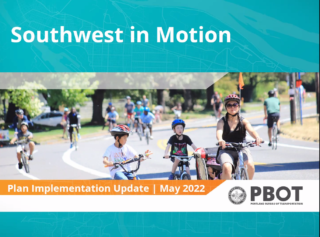
Portland Bureau of Transportation (PBOT) Transportation Planner Corrine McQueen presented an update on the Southwest in Motion (SWIM) plan to the board of SWTrails PDX on Thursday, May 26th.
The meeting came after several SWIM stakeholders had, for nearly a year, inquired about the lack of updates to the SWIM project web page, and a yet-to-be-completed two-year progress report which was expected last fall.
McQueen shared slides which showed the status of various projects as active or completed, but pointed out that this was a “draft” report, and that she was soliciting corrections from the group before loading the data to the project website. She noted that although the SWIM plan had been completed in the summer of 2019, “every part of the project delivery process has been impacted by the pandemic, from funding resources to shifting priorities of the city in response to the pandemic.”
The SWIM document (PDF) stated that the plan was a “short-term prioritization, refinement, and implementation strategy for planned active transportation investments in Southwest Portland.” And that it “identifies a realistic short-term action plan that provides basic walking and bicycling connectivity where they are needed most.”
“Short-term” was generally understood to be under five years, although in the written plan a “possible future” graphic shows Tier 1 projects implemented by the end of 2025. SWIM stakeholder and long-time bicycle activist Keith Liden emailed that he “wanted them to pin it down to at least a range, similar to the Transportation System Plan (TSP) where I believe 1-10 years would be the equivalent of short-term. With a lack of money and commitment, the staff preferred to keep it totally vague.”
Advertisement

Comparing the original “Crossing Enhancement” project list of 53 projects to the updated crossing project slide at right shows that 19 projects have been completed, and that five are active, for a total of 24 projects—or just short of half the original crossings project list.
Of the list of 77 larger-scaled projects, 21 are active or have been completed–or a little more than a quarter of the projects.
To be fair, the SWIM project lists were in some part a catalogue of needs rather than a funded to-do list. And although each project description came with a potential funding source, it was made clear that funding had not been secured.
With a total of 130 projects, give or take a few, it has been difficult for southwest residents to follow, provide input about, or anticipate the implementation of the SWIM plan. This has been exacerbated by the fact that bins of projects have been given to various project managers, each of whom may have a different style of interacting with the public, as well as a different page on the PBOT website.
McQueen acknowledged that “it’s difficult to wrangle bits of information, status of things. PBOT has many employees, and it’s a little tricky to get all that information and bring it into one place,” and she mentioned that their team had discussed having an interactive ArcGIS project map, although they “haven’t got that launched.”
Advertisement
SWIM stakeholder and SWTrails founder Don Baack was particularly concerned about the lack of interaction between the PBOT team and the community:
When we completed the SWIM plan, there was a promise to work with us on the crosswalks, and that never happened… When we asked all the neighbors which were the most important crosswalk projects, something like only about 10 or 15% of those were on the list that PBOT thought were important. So there is a big disconnect there, and we need to have a discussion, and not just PBOT decide which ones are important.
All of the current projects are funded through Fixing Our Streets, which has $500,000 allocated for SWIM projects. This prompted board member Glenn Bridger to comment that “you’re talking about $500,000 in funding to take care of probably $20 million, $30 million in needs. You need to be getting SWIM funded to a level that’s consistent with what the city, as whole, has learned to expect. That means our arterials are safe for people to walk on.”
Setting aside the spreadsheets, and the community problems with inadequate transparency, SWIM projects have nonetheless had a strong impact in areas where they have been completed: the bicycle and pedestrian crossings at the Patton/Montgomery and Patton/Talbot/Greenway intersections; the enhanced crossings at Dosch/30th and Beaverton-Hillsdale Highway; the protected bike and pedestrian lanes on Beaverton-Hillsdale Highway; the road diet on Capitol Highway between Huber and Kerr, and others. Together with the recently completed Red Electric Bridge and the ongoing Capitol Highway project, these areas feel much safer than they did five years ago.
Despite some robust criticism, the meeting was cordial and McQueen ended on a positive note, thanking the group “for the strong emphasis on what is needed … and celebrating some of the wins.”
But the group still wants to talk with SWIM Project Manager Nick Falbo, who had backed out of Thursday’s meeting with short notice. Board President Doug Rogers ended the discussion with, “we were hoping to have Nick Falbo come … maybe next month we will be able to get him over here.”

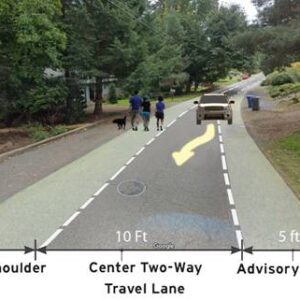
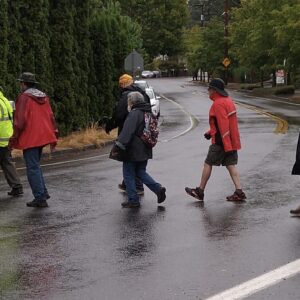
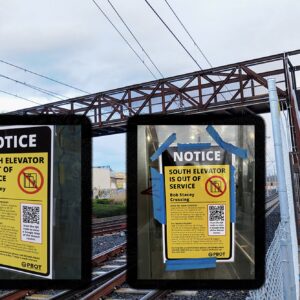
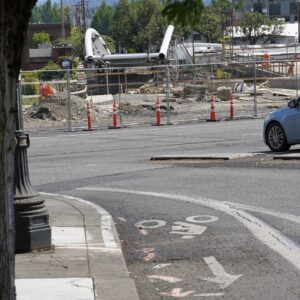
The fact the funding is only $500k for ALL of SW Portland is a bit insulting. I have to run across 5 car lanes on BH to get to the bus stop, the route to the closest school to me only has 20 feet of sidewalk for the entire 3/4 mile walk, most of the “bike infra” is what PBOT calls shared roadways (center stripped roads with no shoulder), and zero sidewalk between me and the closest grocery store that is less than a mile away.
I’m grateful for the projects they have done so far and how every project PBOT has done in the area is slowly improving it, but it’s so so far from being safe to get around without a car.
That’s $500 K for just crossings, not including the millions for Capitol Highway, Barber, and so on. Most of the crossing improvements in the 2012 e-pimp were eventually funded by the state legislature and I’d expect the same for SWIM.
Every other quadrant has been getting tens to hundreds of millions in dollars for funding for the “__ in motion” projects
https://www.portlandonline.com/portlandplan/index.cfm?c=52257
Yeah, but SW Portland has more population than any of the N* quadrants in the link you provided yet arguable worse sidewalk coverage and bike infra. There is no way you can argue that $255 million for East Portland in Motion and $500k for SW in Motion based on population alone. Sure, there is racial and class equity as well, but again does it warrant a 510x more funding for the east side?
What I am getting out is there was no logic for the way these funds were divided for the “__ in motion” projects. The city of Portland and PBOT gives no reason why.
Well, we know it isn’t due to a lack of representation in City Hall. Maybe someone can ask our PBOT commissioner.
It’s not that simple, David. The $500K is definitely not for just crossings, it is for the larger projects also.
Cap Hwy project is not part of SWIM. Marianne Fitzgerald has been advocating for that project since the 1990s: SW Capitol Highway project breaks ground today.
The Red Electric bridge, while brought into the SWIM fold, also has its own history and funding: https://content.govdelivery.com/accounts/ORPORTLAND/bulletins/2cc7cb1 and https://swtrails.org/trails/red-electric/
I would not assume that because the state legislature came through for E. Portland that the same thing would happen with SW Portland. Sometimes things are as bad as they look, SWIM is poorly funded.
Lisa, we both know that all public funding is a political process. One can say that SW is getting shafted, which it probably is, but the downtown is still getting more than 50% of all city funds even though not that many people live there and it’s economic importance has rapidly declined due to covid lockdowns and changes in commutes – basically every district is getting shafted except downtown. In the 2009 Portland Plan process which Chris I references above, participants wanted the city to prioritize projects in the poorer parts of town – East Portland, Cully, Brentwood-Darlington, and parts of North Portland – over richer parts of the city which typically includes much of SW.
East Portland didn’t get all its funding at once either – we had to lobby hard for it and we are thankful that SWNI was willing to help us – and we each got $8 million for sidewalks in 2012 from Sam Adams along with various other projects by delaying bond payments on the Sellwood Bridge, in spite of PBOT push-back. Later EP got its 10 state legislators to siphon off funds from the recently-cancelled ODOT CRC project, funds that went into many pedestrian crossings throughout EP, plus some funds for outer Powell, 136th, outer Sandy, and so on. I’m suggesting that SWNI aim to do the same – when the Rose Quarter and CRC2 projects get cancelled, and they will be, then immediately get their state legislators to siphon off funds for SWIM projects, as PBOT will most likely use such funds for downtown projects as soon as they get their dirty hands on such funds.
If you want anything funded, never wait for PBOT to do the right thing – they never do.
Thanks, Lisa, for your excellent article. I appreciate your coverage of SW and SWIM in particular. The outcome of SWIM is of personal interest for two reasons.
This summer, and hopefully in years to come, I plan to explore much more of the SW quadrant on foot. To date, I’ve found the SW Trails signposts to be invaluable. Kudos to Don and the other members of SWTrails-PDX for their direct action!
In addition to my recreational motive, my wife and I might also be future residents of SW. We’ve been long-time (36 years) residents of inner NE Portland but are considering a move to be closer to our immediate family members. If we move, it would be advantageous to be able to live (relatively) car-free.
Wonderful Mark! If you want to be carfree, Hillsdale strikes me as a good place to be, I really like that neighborhood. It will be interesting to see how/if Capitol Hwy develops due to the new mup. My understanding is that the storm water capacity of the new basins exceeds what is needed for the mup alone. Hillsdale is denser than one would guess, there are many apartments and condos tucked into the areas off of BHH.
Hillsdale is among the areas we’re considering. Thanks!
Based on this (paywalled) article I read in the Oregonian yesterday, it seems to me that BP might need to increase their coverage of our metro burbs.
These Portland-area census tracts added the most new residents over past decade
I’ve been wanting to increase our coverage of the region outside Portland for a very long time Mark. Best way to make that happen is to subscribe and tell all your friends to sign up too!
That’s good news, Jonathan! I’ve been referring Lisa’s articles to my family members who live outside of Portland.
I’m considering subscribing again but am waiting to see your new Terms of Service (my other post this morning).
I’d recommend not rushing the TOS, however, because I know from my work with infosec folks it can take time to carefully compose. It could also lead to changes to your site, beyond a new page.
FWIW, once I subscribe, I think I’ll go back into reader hibernation mode. I generally prefer walking to talking 🙂
“To be a Portland taxpayer is to be perpetually disappointed.”
We all need to vote YES on the charter reform in November.